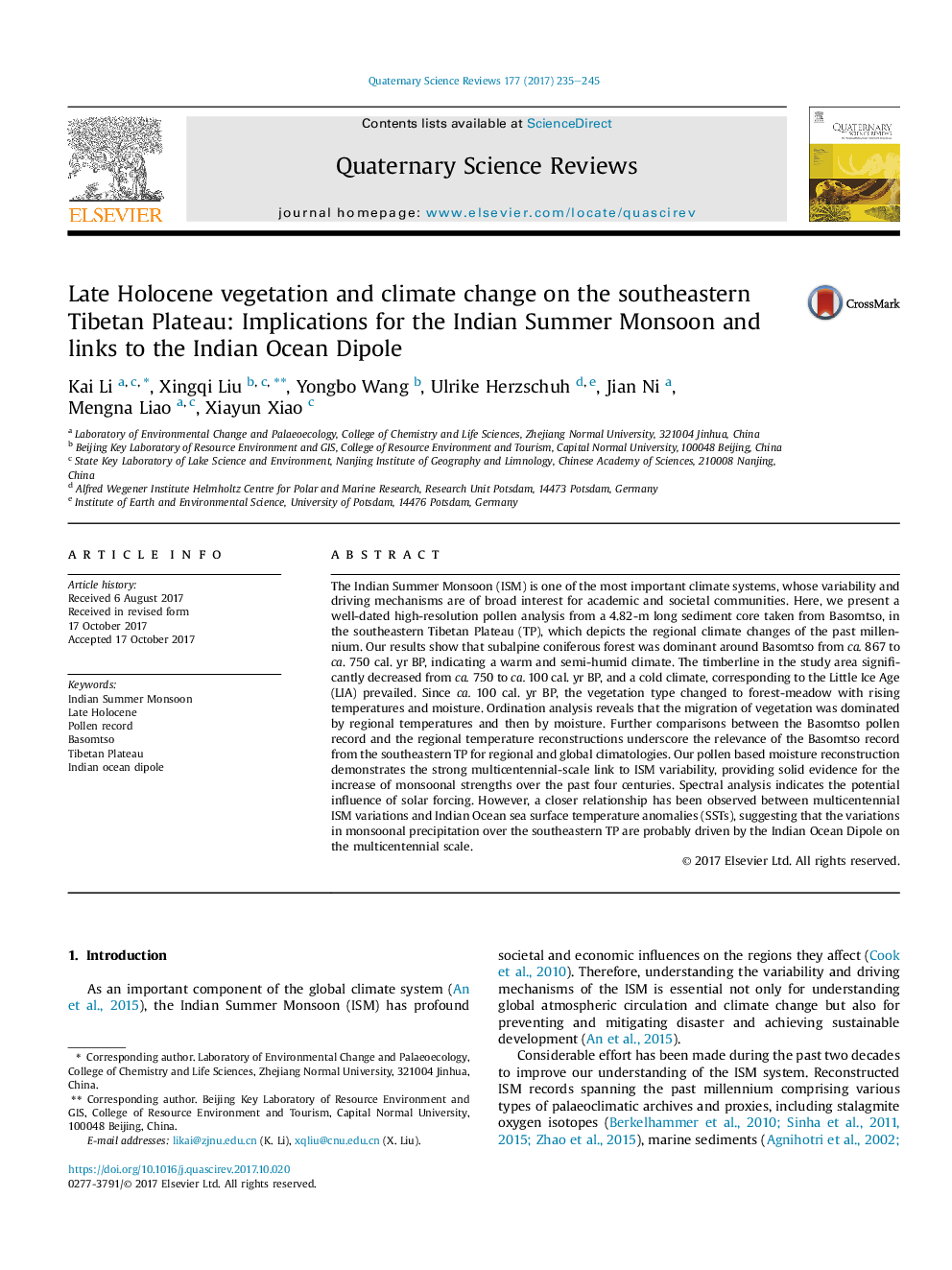| کد مقاله | کد نشریه | سال انتشار | مقاله انگلیسی | نسخه تمام متن |
|---|---|---|---|---|
| 8915100 | 1640758 | 2017 | 11 صفحه PDF | دانلود رایگان |
عنوان انگلیسی مقاله ISI
Late Holocene vegetation and climate change on the southeastern Tibetan Plateau: Implications for the Indian Summer Monsoon and links to the Indian Ocean Dipole
ترجمه فارسی عنوان
پوشش گیاهی بعد از هولوسن و تغییرات اقلیمی در جنوب شرقی پلاتو تبت: پیامدهای ناشی از فصل تابستان هندوستان و پیوندهای آن با اقیانوس هند
دانلود مقاله + سفارش ترجمه
دانلود مقاله ISI انگلیسی
رایگان برای ایرانیان
کلمات کلیدی
موضوعات مرتبط
مهندسی و علوم پایه
علوم زمین و سیارات
زمین شناسی
چکیده انگلیسی
The Indian Summer Monsoon (ISM) is one of the most important climate systems, whose variability and driving mechanisms are of broad interest for academic and societal communities. Here, we present a well-dated high-resolution pollen analysis from a 4.82-m long sediment core taken from Basomtso, in the southeastern Tibetan Plateau (TP), which depicts the regional climate changes of the past millennium. Our results show that subalpine coniferous forest was dominant around Basomtso from ca. 867 to ca. 750 cal. yr BP, indicating a warm and semi-humid climate. The timberline in the study area significantly decreased from ca. 750 to ca. 100 cal. yr BP, and a cold climate, corresponding to the Little Ice Age (LIA) prevailed. Since ca. 100 cal. yr BP, the vegetation type changed to forest-meadow with rising temperatures and moisture. Ordination analysis reveals that the migration of vegetation was dominated by regional temperatures and then by moisture. Further comparisons between the Basomtso pollen record and the regional temperature reconstructions underscore the relevance of the Basomtso record from the southeastern TP for regional and global climatologies. Our pollen based moisture reconstruction demonstrates the strong multicentennial-scale link to ISM variability, providing solid evidence for the increase of monsoonal strengths over the past four centuries. Spectral analysis indicates the potential influence of solar forcing. However, a closer relationship has been observed between multicentennial ISM variations and Indian Ocean sea surface temperature anomalies (SSTs), suggesting that the variations in monsoonal precipitation over the southeastern TP are probably driven by the Indian Ocean Dipole on the multicentennial scale.
ناشر
Database: Elsevier - ScienceDirect (ساینس دایرکت)
Journal: Quaternary Science Reviews - Volume 177, 1 December 2017, Pages 235-245
Journal: Quaternary Science Reviews - Volume 177, 1 December 2017, Pages 235-245
نویسندگان
Kai Li, Xingqi Liu, Yongbo Wang, Ulrike Herzschuh, Jian Ni, Mengna Liao, Xiayun Xiao,
